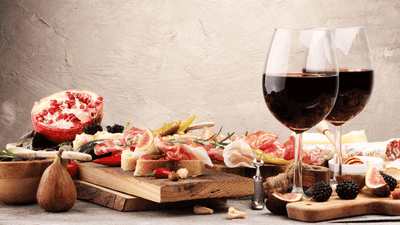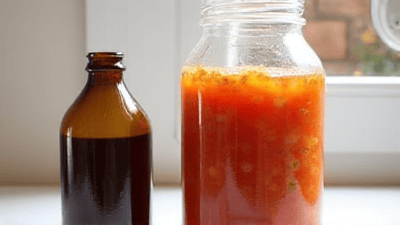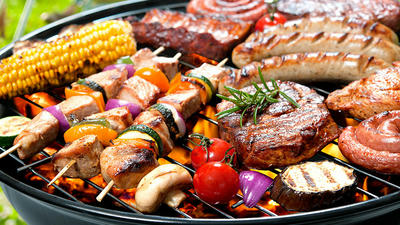
Wine and food pairing is an art, a science, and a delightful journey for the senses. Whether you are hosting a dinner party, celebrating a special occasion, or simply enjoying a cozy meal at home, understanding how to combine different wines with various dishes can elevate your dining experience.
Understanding Wine and Food Pairing
Food pairing is not just about choosing a wine that you enjoy; it’s about complementing flavors, textures, and aromas. When done successfully, the combination can enhance each element, creating a harmonious balance that delights the palate. Let’s explore the factors that influence wine and food pairing.
1. Basic Principles of Pairing
Here are some fundamental principles to consider when pairing wine with food:
a. Match Intensity: The intensity of the wine should match the intensity of the dish. A light seafood dish pairs well with a light white wine, while a robust steak dish might be complemented by a full-bodied red.
b. Complement vs. Contrast: Pairing can either complement the flavors in the dish or create a pleasing contrast. For example, a rich creamy sauce might be nicely complemented by a crisp white wine, while spicy food can benefit from a slightly sweet wine to balance the heat.
c. Consider Acidity: The acidity in both food and wine can impact a pairing. High-acid wines are great with dishes that feature tomatoes or citrus, as the acidity complements the freshness of the flavors.
d. Regional Pairing: Often, wines and foods from the same region pair well together. Italian wines with Italian cuisine, for example, tend to create a natural harmony due to the shared soil, climate, and cultural influences.
2. Components of Wine
Before we dive into specific pairings, it’s essential to understand the key components of wine that affect how it pairs with food:
a. Tannins: Found in red wines, tannins can add a bitter touch. They work well with fatty foods, as the fat softens the perception of tannins.
b. Acidity: Wines with high acidity are refreshing and can cut through rich, oily dishes, enhancing flavors.
c. Sweetness: Sweet wines can balance savory and spicy dishes, while dry wines are often suited for simpler flavors.
d. Body: The body of a wine refers to its weight on the palate. Lighter-bodied wines are best with delicate dishes, while full-bodied wines can hold up to hearty meals.
Perfect Wine and Dish Combinations
Now that we’ve covered the basics, let’s explore some perfect wine and dish combinations. We’ll categorize them by the type of wine—white, red, rosé, sparkling, and dessert wines—providing you with a variety of options for any occasion.
White Wines
1. Sauvignon Blanc
Pairing: Grilled Shrimp Tacos
Sauvignon Blanc is known for its zesty acidity and citrusy notes. It pairs beautifully with grilled shrimp tacos, offering a refreshing contrast to the spices and richness of the shrimp.
2. Chardonnay
Pairing: Creamy Alfredo Pasta
A rich, buttery Chardonnay complements the creamy texture of Alfredo pasta. The wine’s oak notes add depth, enhancing the overall experience.
3. Pinot Grigio
Pairing: Lightly Grilled Vegetables
The crispness of Pinot Grigio enhances the flavors of grilled vegetables. The wine’s floral notes and acidity make it an excellent match for minimalistic dishes.
Red Wines
4. Cabernet Sauvignon
Pairing: Grilled Ribeye Steak
Cabernet Sauvignon’s bold tannins and dark fruit flavors perfectly complement the rich flavor of ribeye steak. A side of roasted garlic mashed potatoes enhances the pairing further.
5. Pinot Noir
Pairing: Herb-Crusted Salmon
The delicate flavors of Pinot Noir work wonderfully with herb-crusted salmon. The wine's earthiness and acidity balance the richness of the fish.
6. Merlot
Pairing: Mushroom Risotto
Merlot’s soft tannins and fruit-forward character pair beautifully with the earthy flavors of mushroom risotto, enhancing the dish’s creamy texture.
Rosé Wines
7. Dry Rosé
Pairing: Mediterranean Salad
A dry rosé complements the bright flavors of Mediterranean salad, featuring olives, feta cheese, and fresh vegetables. The wine’s acidity harmonizes with the salad's vinaigrette.
Sparkling Wines
8. Champagne
Pairing: Oysters
Champagne’s effervescence and acidity make it a match made in heaven for oysters. The brininess of the oysters enhances the wine's crispness, creating a delightful interplay.
9. Prosecco
Pairing: Fried Calamari
The fruity and floral notes of Prosecco make it an ideal partner for fried calamari. The wine's bubbles help cleanse the palate after each bite.
Dessert Wines
10. Port
Pairing: Dark Chocolate Fondue
The sweetness of port complements the richness of dark chocolate, creating a luxurious pairing that indulges the senses.
11. Riesling
Pairing: Apple Tart
A sweet Riesling nicely balances the flavors of a spiced apple tart. The wine’s acidity cuts through the sweetness of the dessert, creating a well-rounded experience.

Regional Wine Pairing Suggestions
One effective way to explore food and wine pairings is by focusing on regional cuisines. Different regions produce wines that complement local dishes beautifully. Here are a few examples:
Italian Cuisine
Wine: Chianti
Dish: Spaghetti Bolognese
Chianti, a classic Italian red, pairs perfectly with a hearty spaghetti Bolognese. The wine’s acidity cuts through the richness of the meat sauce.
French Cuisine
Wine: Bordeaux
Dish: Coq au Vin
A robust Bordeaux wine goes hand in hand with the rich flavors of Coq au Vin, enhancing the dish’s complexity with its tannins and dark fruit notes.
Spanish Cuisine
Wine: Tempranillo
Dish: Tapas
Tempranillo’s medium-bodied character is fitting for a variety of tapas. The wine’s fruitiness works well with cured meats, cheeses, and olive dishes.
Tips for Successful Pairing
To master the art of food pairing, consider these practical tips:
1. Taste Before You Pair
Whenever possible, taste the food and wine together. This allows you to assess how they interact and makes it easier to adjust your choices.
2. Experiment and Keep Notes
Every palate is different. Experiment with various pairings, and keep notes on what works and what doesn’t. This will help you refine your understanding of your preferences.
3. Seek Guidance from Experts
Don’t hesitate to ask for recommendations from wine shop staff or sommeliers. Their expertise can guide you toward excellent pairings based on your dish.
4. Don’t Overthink It
Wine and food pairing should be enjoyable. While there are guidelines, the most important thing is to choose wines and dishes that you love. Trust your instincts.
5. Consider the Occasion
Think about the context of your meal. A casual barbecue may call for different wines compared to an elegant dinner party. Tailor your pairings to fit the mood.
Conclusion
The art of food pairing enriches our culinary experiences by harmonizing flavors and enhancing the enjoyment of both food and wine. By understanding the basic principles of pairing and exploring various combinations, you can create memorable meals that delight the senses.
Whether you are savoring a light white wine with a fresh salad or indulging in a robust red with a hearty meal, the right wine can elevate your dish to new heights. Embrace the journey of discovering perfect pairings, and enjoy the delicious world of food and wine that awaits you.



